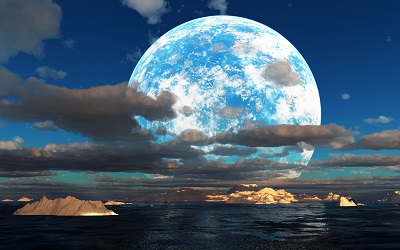Water on the moon is widespread across its surface and appears to be present at all times of the lunar day, according to a new analysis of two lunar missions.
The new evidence contradicts previous research suggesting water was confined to certain areas and depended on lunar days. “We find that it doesn’t matter what time of day or which latitude we look at, the signal indicating water always seems to be present,” said Joshua Bandfield, a senior research scientist with the Space Science Institute in Boulder, Colorado, according to RT.
“The presence of water doesn’t appear to depend on the composition of the surface, and the water sticks around,” he added. It’s hoped the results will lead to a greater understanding of the origins of the moon’s water and offer insight into how it could be used as a resource.
It’s not yet clear how accessible the water supply is but if it is convenient to reach it could be used as a drinking water for future explorers or converted to use for rocket fuel, NASA said in a statement.
New studies suggested that more water was detected at the moon’s polar latitudes and that the strength of the water signal waxes and wanes according to the lunar day. However, these analyses depended on remote-sensing instruments which were challenged by the mixture of reflected and emitted light. For this latest examination, Bandfield and his team created a new model to incorporate temperature information for more accurate results.
Their results showed widespread and relatively immobile water indicating that it may be present primarily as hydroxyl (OH), a more reactive relative of H2O that is made of one oxygen atom and one hydrogen atom. It also suggests that any H2O present on the moon isn’t loosely attached to the surface.
H.Z

